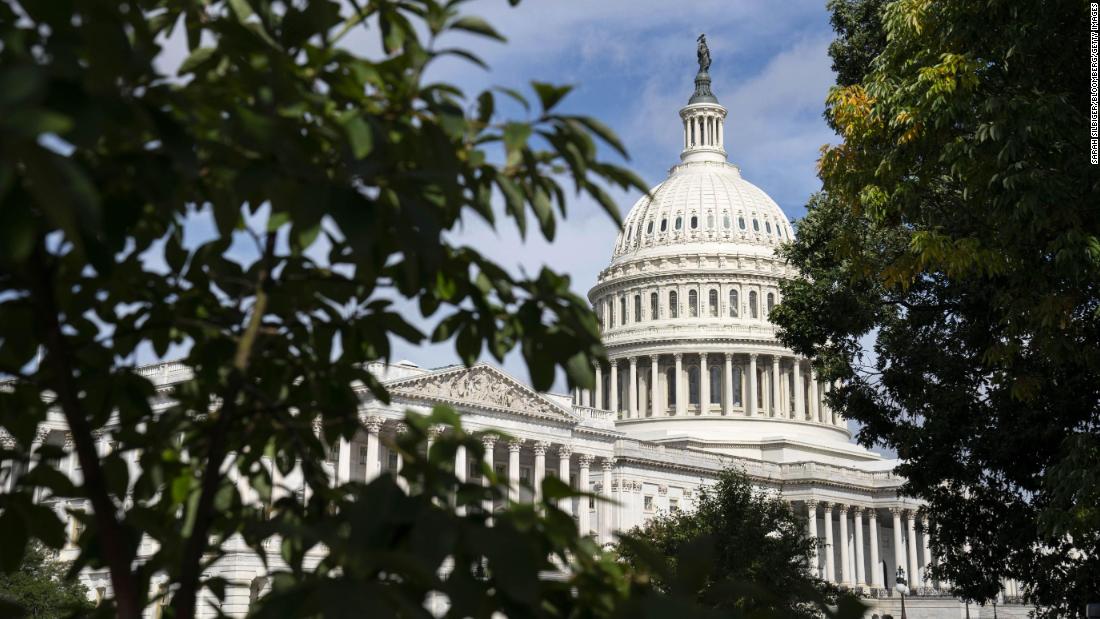
What’s at stake? “Just about everything”
This is one of those weeks when it feels like every single story is about Congress. Lawmakers are grappling with a government funding deadline, multiple infrastructure bill votes, a debt ceiling fight that shouldn’t be a fight at all, and more. If you’re anything like me, you’re wondering, “What the heck is going on?”
It’s easy to find incremental updates about statements and negotiations. It’s often harder to find the step-back, big-picture, what-it-all-means reporting. If you’re following along every minute of every hour, then you feel well served, but if you’re just tuning in for the first time, you may feel lost.
That’s why this coverage needs lots of “insider” beat reporting but lots of options for “outsiders” too. I’d humbly suggest that two types of stories could appear side by side on homepages: “Here’s the very latest on the infrastructure battle” next to “Why are lawmakers arguing over road construction at all?”
I liked the way John King set it up on “Inside Politics” Wednesday: “At issue? Well, just about everything,” he said. “The size of a giant Democratic spending plan; how that money is split up among a long list of Democratic policy goals; how to keep a promise to centrists to vote on a separate roads and bridges plan by Monday; and do that without infuriating progressives who insist both spending plans need to proceed at the same time.”
Much of Wednesday’s coverage revolved around President Biden’s peace-seeking meetings with Democratic leaders, moderates and progressives. Afterward, John Berman said on “AC630,” “the impasse is still there, even if both sides are using words like ‘constructive’ and even ‘productive’ to describe the talks.” There will be more meetings on Thursday…
“So many moving parts…”
I asked CNN chief congressional correspondent Manu Raju: What’s the most challenging part about covering all of this legislative maneuvering? Here’s what he said:
“This is a highly complex and complicated story to cover. There are just so many moving parts in this negotiation, so many key players who have concerns both big and small — and so much uncertainty about what’s going to happen. There are private meetings and calls that are constantly happening. There are members walking through the Capitol whom you need to grab for the two minutes that they’re in the halls. So you have to be in the right place at the right time to stake someone out and hope they don’t take a different route. And with the rules in the Capitol, we can only grab members on camera in certain locations — making it trickier to calculate where to be in any given moment.”
There are multiple clashes happening at the same time, Raju pointed out: “Unlike the Affordable Care Act, which was another all-consuming debate to cover, that dealt with just one issue: health care. This debate over $5 trillion worth of legislation deals with every issue under the sun — not to mention an economic crisis waiting in the wings if the two sides can’t get a deal to hike the debt ceiling and avert a government shutdown. So there’s a fight within the Democratic Party over the Biden agenda — and a fight between the two parties over averting a catastrophe.”
“So many developments through the course of a day are happening at the exact same time in different wings of the Capitol — in both the House and the Senate — so we need to make a calculation about where to be at any given moment,” he added. “Because if you’re not reporting for every minute, you’re missing something.”
Raising the debt limit is about “reality”
Here’s how CNN’s Jake Tapper put it on Wednesday: “Republicans are refusing to vote to raise the limit on federal borrowing, also known as the debt ceiling, despite having done so under President Trump, and despite the fact that the overwhelming majority of the debt was accrued before President Biden.”
Now some Democrats are floating a “Plan B” way to raise the ceiling. But the GOP resistance can’t be overlooked. As Lawrence Summers told WaPo: “We took on this debt in a bipartisan way. We’re prepared to expand the debt in a bipartisan way. I don’t see why it’s justified to refuse to acknowledge reality. Reality is not a partisan thing. Raising the debt limit is acknowledging reality, not making a partisan choice.”
Unfortunately, we’re way past the point of “shared reality” in American politics. Meantime, Google Trends data shows that some people are searching for info about this: “Trending questions” about the debt ceiling in the past week have included “What does raising the debt ceiling mean?” and “What happens if the US defaults?” My favorite: “Why is there a debt ceiling?” Here are the government benefits that would be at risk if the Congress doesn’t act…
Even more news from Capitol Hill
— As Rep. Peter DeFazio told NBC, “I’ve been here for cliffs and crises and wars, and this is going to be the biggest mashup we’ve ever had since I’ve been here… and I have no idea how it all works out…”
— Page One of Thursday’s WaPo: “Legislative negotiations on policing are fruitless…”
— House Dems “have quietly moved to restrict the GOP’s ability to use its limited power in the minority to press for investigations,” CNN’s Melanie Zanona and Manu Raju report…
— “A group of bipartisan lawmakers is dedicated to getting a new memorial to honor military veterans of the global war on terrorism built in a place of prominence: the National Mall in Washington, DC,” CNN’s Ali Zaslav reports…
— For some reason Jessica Rosenworcel is still only the acting chair of the FCC. On Wednesday 25 Democratic senators urged Biden to re-up her appointment and name her chair. Here’s the letter…



